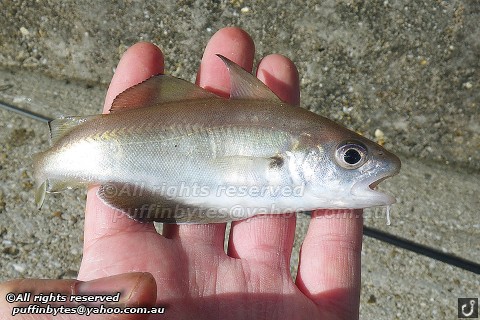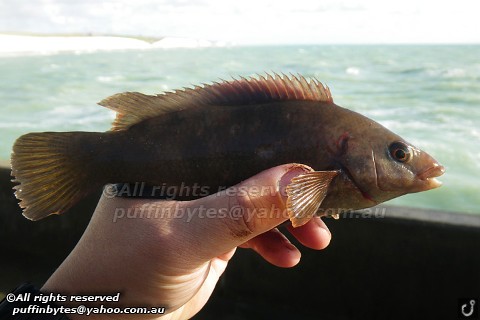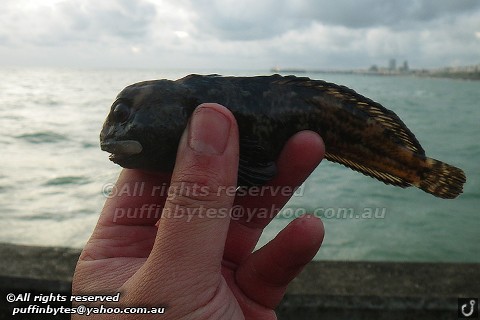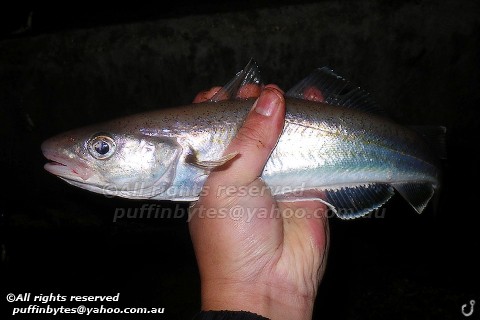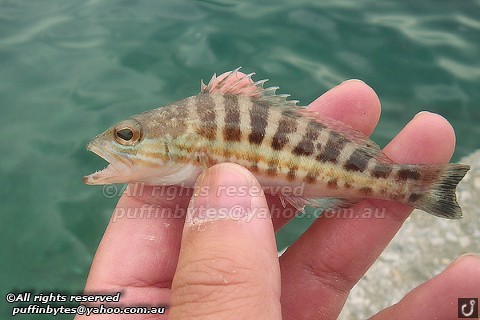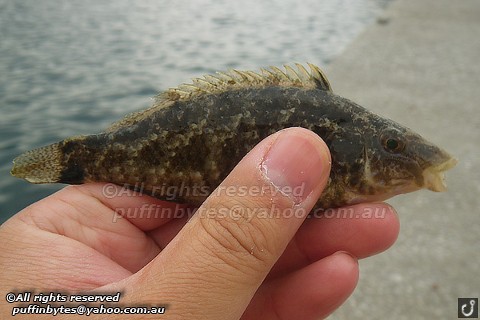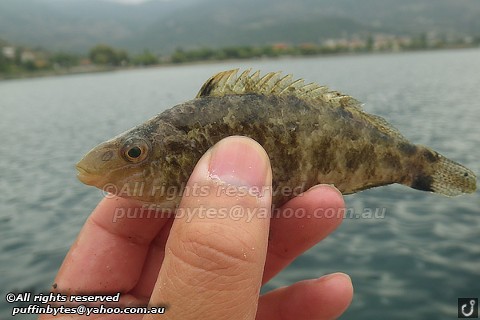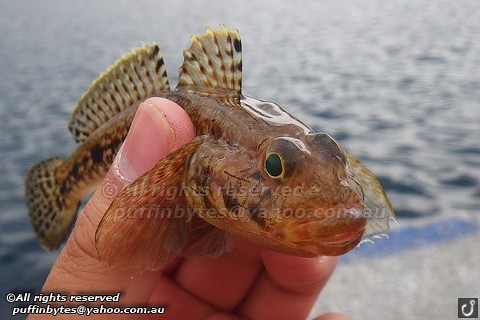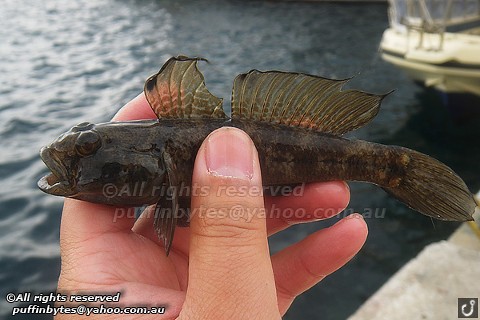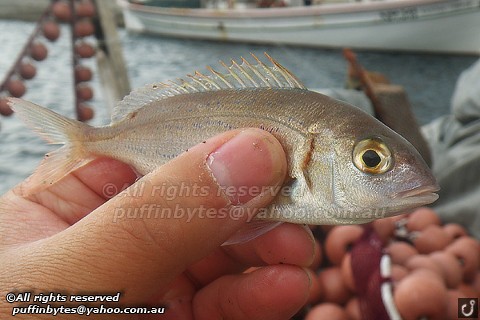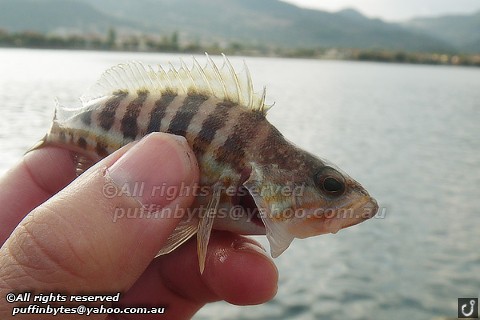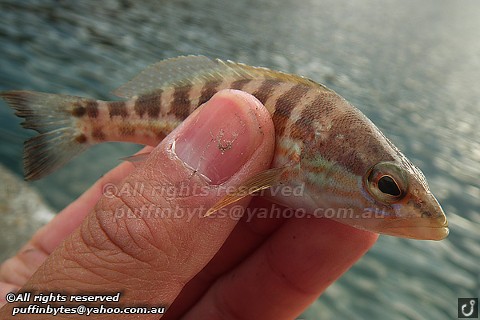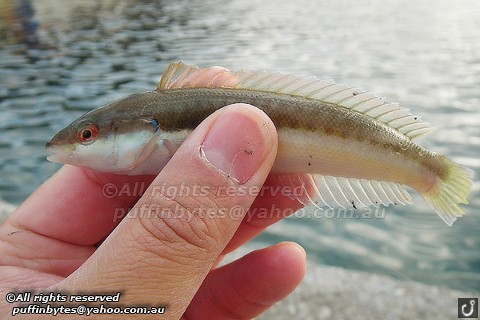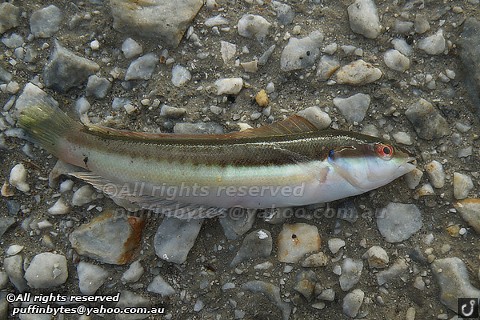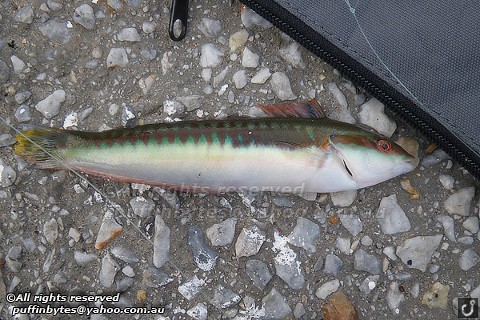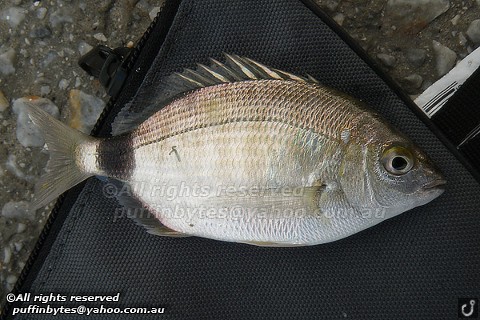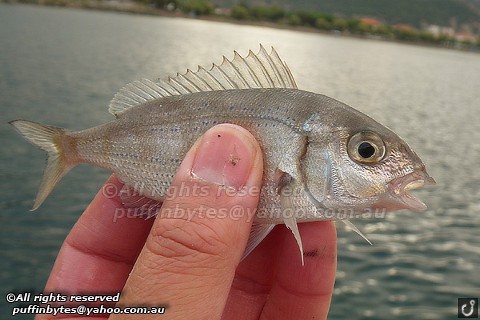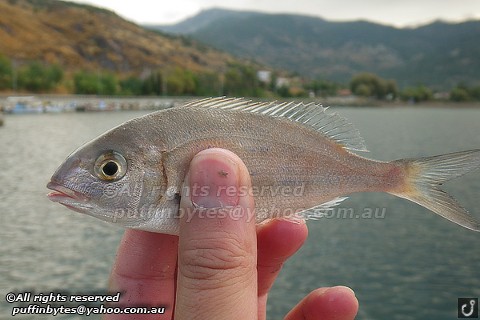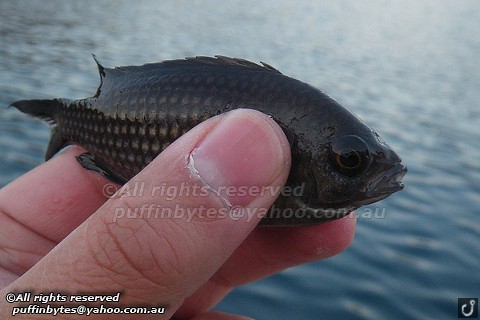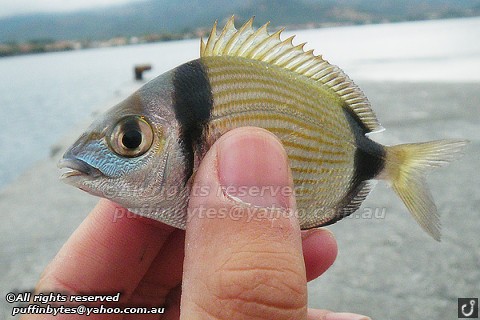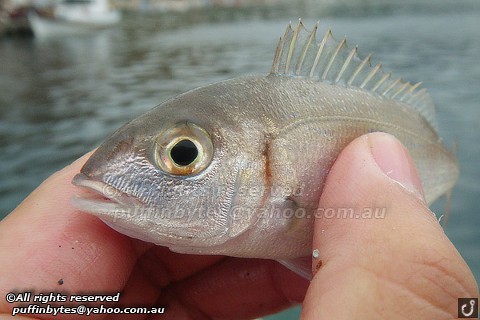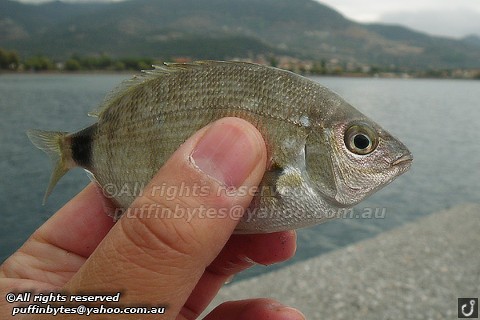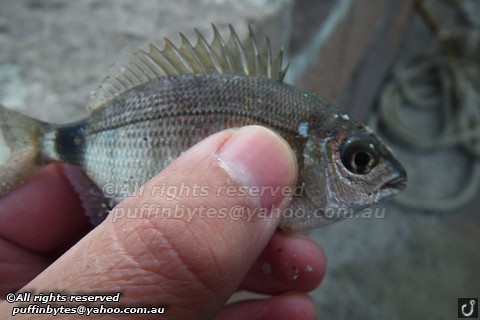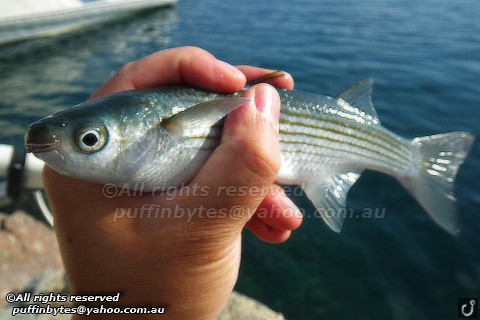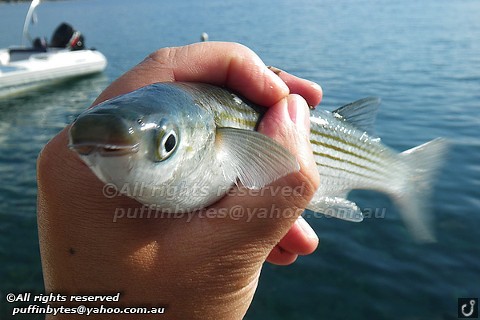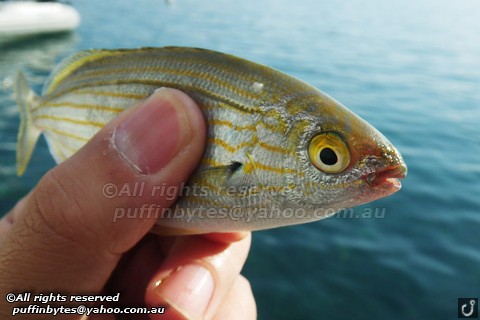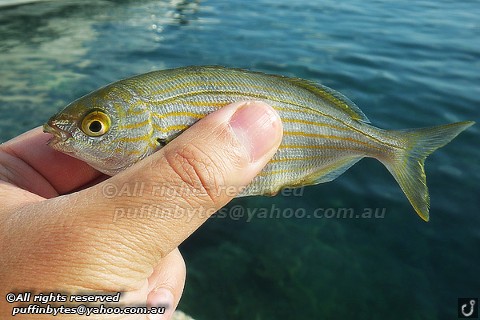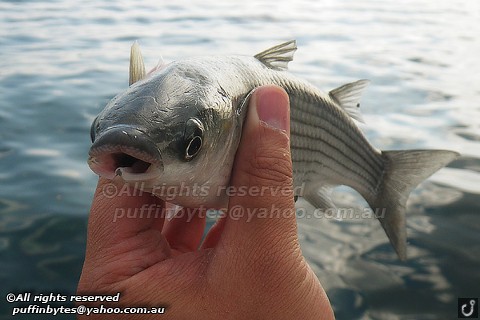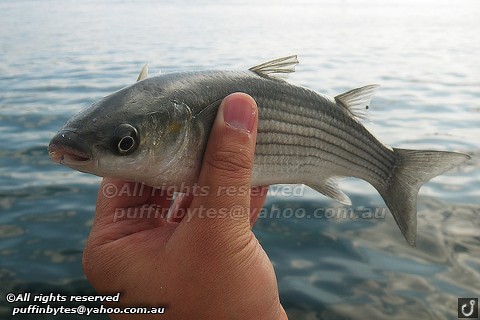I hadn't mentioned this earlier in my blog, but I had previously arranged for a fishing trip in the evening from a local boat excursion company earlier in the week. I wasn't too sure how much they knew about fishing, but I did have to supply my own equipment, they'd supply the bait, although I still had about 80% of the calamari I had bought at the start of the trip.
It was the warmest day of the trip so far, very humid but still cloudy. We decided to have a little swim just out from the hotel's driveway. The water wasn't too bad. I still hadn't gotten over losing that good Comber earlier in the day, but it was good to see the habitat that I had been fishing. I saw many small bream in the water, Annualar and Common White (which I didn't get to catch). The first big fish I saw was a nice fully grown Striped Sea-bream, they occur from Europe all the way down to Southern Africa, but I didn't expect to see one here. Then, I saw a school of about 5 gilthead bream, nice sized ones too, I had previously caught these in the Canary Islands where they are quite rare though. If I had known, I probably would have tried to fish the beach instead of the jetty, might have got a few more species of bream.
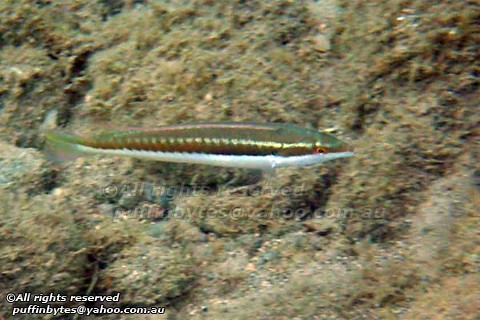
Mediterranean Rainbow Wrasse - Coris julis
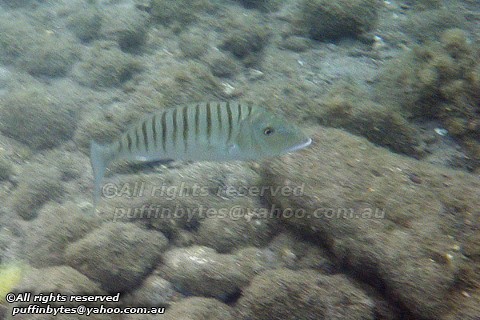
Striped Seabream - Lithognathus mormyrus
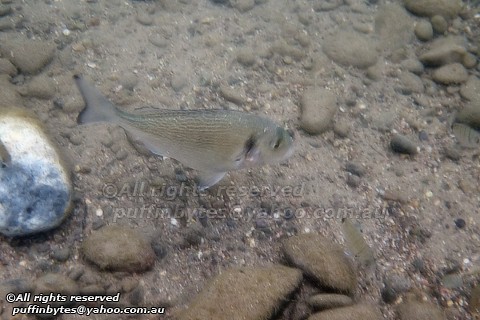
Gilthead Seabream - Sparus aurata
Later on, I found a few red mullet feeding. I noticed that they were being followed by juvenile bream who fed on the scrapes that were stirred up. What's also weird is that the red mullet weren't even red. I think they can change colour to suit their habitat as I've seen pictures of live red mullet that are red, but these were just whitish with a broad brown stripe and several yellow ones.
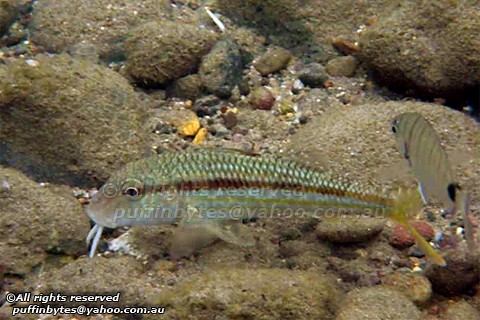
Striped Red Mullet - Mullus surmuletus
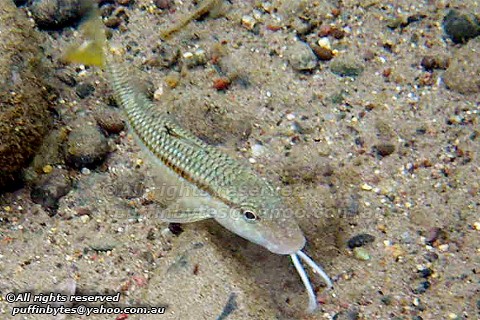
Striped Red Mullet - Mullus surmuletus
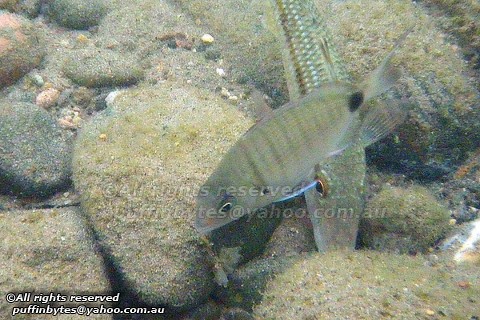
White Seabream - Diplodus sargus
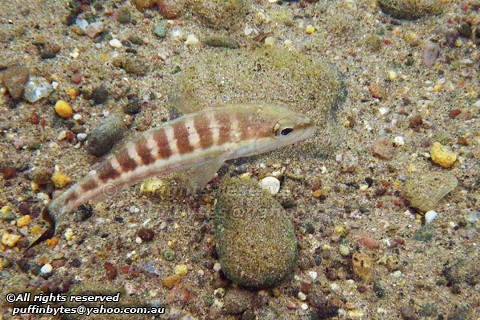
Comber - Serranus cabrilla
We arrived at the Jetty at planned at 5pm and the boat driver took us straight out to a reef where there were a few other fisherman fishing as well. It must have been about 50 metres deep as it took over a minute for my 3oz lead to get to the bottom. We fished here for about 15 minutes but nothing happened so we moved to a more sheltered bay around the corner. Here I had my first bite and landed my first fish of the trip, it was a smallish Annular Bream, but it hopped back into the sea before I could get a photo. Next, I had a few Comber, these were bigger than any of the ones I had on the jetty, but not as big as the one I lost. They were a much redder colour, and really looked like mini coral trout. They must have come from quite a depth because their air bladders where quite inflated when they got to the surface.
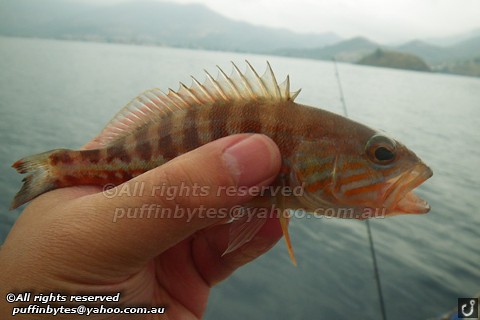
Comber - Serranus cabrilla
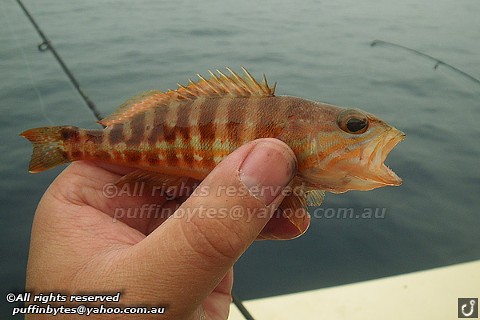
Comber - Serranus cabrilla
We suddenly heard a few splashs about 20 metres away, and something large breached, I originally thought it was a dolphin, then a marlin, but when an entire fish of that was about 1.5m long leap clear out of the water, I instantly knew what it was, an Atlantic Blue-fin Tuna. Over the next half an hour or so, we saw several more breach, but I was not able to get any photos of it.
The activity slowed, as did the fishing. I also got tired of catching comber, so we moved around to the jetty on the side of the island. Lines in again, what did I land? another comber. A slightly bigger comber though and a brown one again. While fishing, I noticed a nice sized stripy fish hanging around and waited for it to take my bait. I took the bait away from the smaller fish when I saw them taking it, and soon I was in, a short tussle and landed my bigger comber of a trip. It was probably bigger than the one I lost in the morning. It was a proper fish, it looked like somewhat like Perch, but was more spikey and had sharp spines on the gill plates as well.

Comber - Serranus cabrilla

Comber - Serranus cabrilla
After a few more comber I decided to fish the other side of the boat which was in slightly deeper water. I lost one rig before I landed a very colourful looking Comber. A Painted Comber [#115], it had more of a hunched back, pointier nose, red tips to its dorsal fin, and a blue belly. It looks like a more aggressive fish with is 'bandit' black strip across its eyes.
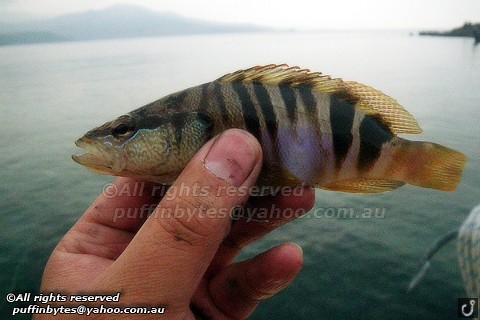
Painted Comber - Serranus scriba #115
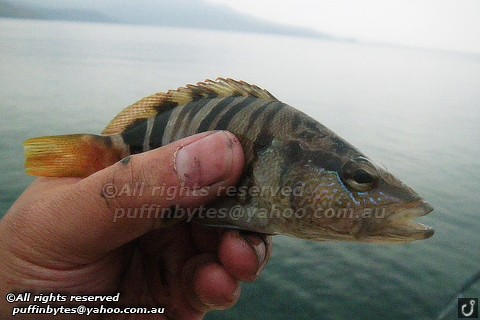
Painted Comber - Serranus scriba
We were provided a dinner of Feta, Tomatoes, Cucumber, Bread, wine and some homemade pickled fish which were really nice, but after the meal, it was very dark, and the captain wanted to try to catch calamari. He only had squid jigs on handlines and we setup a light pointing down into the sea where we would jig the jigs. I decided to continue fishing with bait as well, but nothing took on either line. After less than a quarter of an hour, the batteries on the light went out so we were jigging into the darkness. I persisted fishing but nothing happened and I had to call it the day.
After spending a week in Petra, Lesvos, Greece, I caught 13 species of fish, all of which I have not caught before, although I may be seen some of them while snorkelling. This brings my fishing life list to 115 and my 2010 list to 53, 34 new. I've got another ton coming up and that is my photo 100. I've currently got 97 species with fishing photos.
Comber
Serranus cabrilla #103
Annular Seabream
Diplodus annularis #104
Boxlip Mullet
Oedalechilus labeo #105
Salema
Sarpa salpa #106
Golden Grey Mullet
Liza aurata #107
Mediterranean Rainbow Wrasse
Coris julis #108
Common Pandora
Pagellus erythrinus #109
Damselfish
Chromis chromis #110
Common Two-banded Seabream
Diplodus vulgaris #111
Grey Wrasse
Symphodus cinereus #112
Red-mouthed Goby
Gobius cruentatus #113
Black Goby
Gobius niger #114
Painted Comber
Serranus scriba #115


